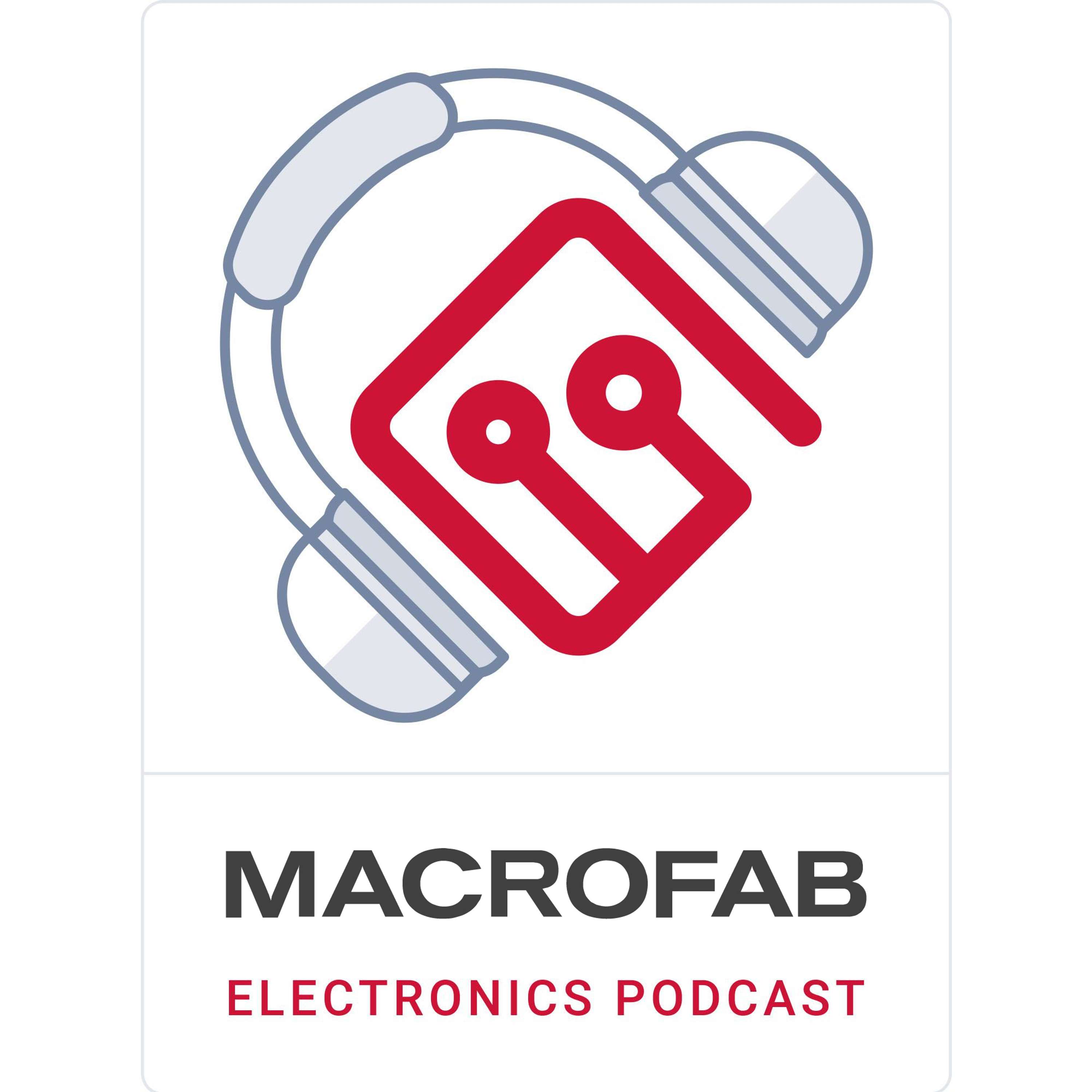MEP EP#196: Foamy Power Factors - Electrolytic Capacitors with KEMET
- Author
- MacroFab, Inc.
- Published
- Wed 30 Oct 2019
- Episode Link
- https://share.transistor.fm/s/4459c75b
MEP EP#196: Foamy Power Factors - Electrolytic Capacitors with KEMET
Episode 200 is Coming Up!
- Question / Answer setup like Episode 100
- Send them via Audio Format to [email protected]
Ivan Quiroz
- Over 19 years of electronic design and development experience in different industries ranging from aviation to industrial automation
- His technical expertise surrounds the intrinsic requirements and detailed development of circuits
- In his down time, he likes to develop escape room puzzles, sensors, and anything he can 3D print
Suzana Jankuloska
- Is an electrical engineer from Macedonia
- Has been with KEMET for 7 years and as a Product Manager of Electrolytic Capacitors for 3 years
- Loves solving problems and sudoku and is a fan of martial arts and the movie Ip Man
Electrolytic Capacitors
- Discuss ESR, ESL, Dissipation factor, Tan Delta, Ripple current, and life span
- How to read the datasheet for an electrolytic capacitor beyond the value/voltage/dimensions
- impedance at a known switching frequency
- Brief introduction to a new type of electrolytic capacitor (polymer)
- Link the electrolytic capacitor to the need for a bank capacitors
- Signals through electrolytics
- Leave on forever vs. multiple inrush cycles preferred for lifetime?
- What drifts out of spec first?
- The wear-out failure mode is loss of electrolyte
- It is possible to measure this by weighing the capacitor before and after operating it at elevated temperature
- When the capacitor loses a certain amount of weight, it is likely to fail
- In the old days, the rule of thumb was to predict failure at 50% of the initial weight
- What's the point of those orange SMD tantalum capacitors?
- On large screw terminal caps, are the screws themselves typically intended to carry current, or just to mechanically tie the cap to the mounting surface (bus bar, PCB, etc.)?
- Is it important to use aluminum screws to match materials to avoid corrosion from dissimilar metals in high current applications?
